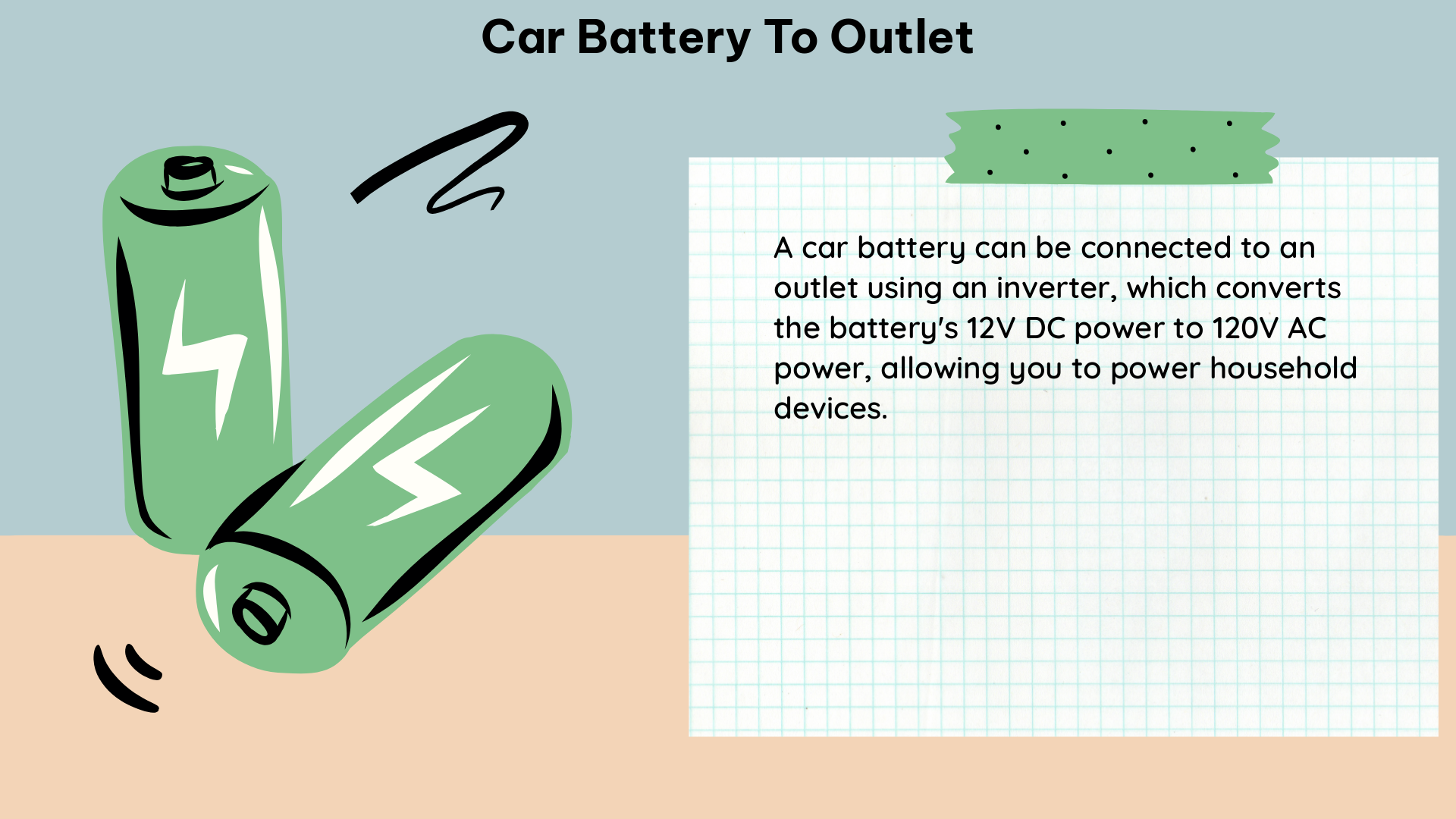Converting a car battery to an outlet can be a practical and cost-effective solution for powering various devices, from camping gear to emergency equipment. However, this process requires a deep understanding of the technical specifications and considerations involved to ensure safe and efficient operation. In this comprehensive guide, we’ll delve into the intricacies of car batteries, their power output, and the steps to successfully convert them into a reliable power source.
Understanding Car Battery Specifications
Voltage and Capacity
A standard 12V lead-acid car battery typically has a fully charged voltage of 12.7V and is considered discharged when the voltage drops to 11.6V. The battery’s capacity is measured in ampere-hours (Ah), which represents the amount of current the battery can deliver over a specific period. Common car battery capacities range from 40Ah to 100Ah, with higher-capacity batteries providing more runtime for connected devices.
C-Rate and Discharge Characteristics
The C-rate is a crucial factor when converting a car battery to an outlet. It represents the rate at which the battery is charged or discharged relative to its maximum capacity. A higher C-rate means a faster charge or discharge, while a lower C-rate indicates a slower process. For example, a 1C rate for a 100Ah battery would be 100A of current, while a 0.5C rate would be 50A. Understanding the battery’s C-rate is essential to determine the appropriate power output for the connected devices.
| Battery Capacity | C-Rate | Discharge Current |
|---|---|---|
| 40Ah | 1C | 40A |
| 60Ah | 1C | 60A |
| 100Ah | 1C | 100A |
Voltage Regulation and Maintenance Charging
When using a device that outputs a high current at 12V, the battery may only be able to charge to around 50% of its capacity. Most chargers designed for car batteries will go up to around 14.2V before dropping down to a lower voltage for maintenance charging, which helps prevent overcharging and extends the battery’s lifespan.
Considerations for Conversion

Power Conversion Efficiency
The efficiency of the power conversion process is crucial when converting a car battery to an outlet. Factors such as the type of inverter used, the quality of the electrical connections, and the load on the system can all impact the overall efficiency. High-quality inverters can achieve efficiencies of up to 90%, while lower-quality models may only reach 70-80% efficiency.
Electrical Safety and Grounding
Proper electrical safety and grounding are paramount when working with car batteries and power conversion systems. Ensure that all connections are secure, and the system is properly grounded to prevent the risk of electrical shocks or short circuits. Additionally, use appropriate fuses and circuit breakers to protect the battery and connected devices from overcurrent situations.
Environmental Impact and Sustainability
The environmental impact of battery manufacturing is an important consideration when using car batteries as a power source. Battery production can result in significant CO2 emissions, especially in regions with less clean energy. To minimize the environmental footprint, prioritize proper battery management, recycling, and the use of renewable energy sources for charging and powering the converted system.
Step-by-Step Guide to Converting a Car Battery to an Outlet
-
Assess the Battery Capacity and Condition: Determine the voltage, capacity, and overall condition of the car battery to ensure it can provide the necessary power for your intended use.
-
Select an Appropriate Inverter: Choose an inverter that can handle the power requirements of your connected devices. Consider factors such as the continuous and surge power ratings, as well as the efficiency and safety features.
-
Establish Secure Electrical Connections: Carefully connect the inverter to the car battery, ensuring that the positive and negative terminals are properly secured and protected from short circuits.
-
Implement Proper Grounding: Ground the system to a suitable grounding point, such as the car’s chassis or a dedicated grounding rod, to ensure electrical safety.
-
Install Necessary Fuses and Circuit Breakers: Incorporate appropriate fuses and circuit breakers to protect the battery and connected devices from overcurrent situations.
-
Monitor Battery Charge and Discharge: Regularly check the battery’s voltage and state of charge to avoid over-discharging, which can damage the battery. Consider using a battery monitor or charge controller to maintain optimal battery health.
-
Manage Battery Charging and Maintenance: When the battery needs recharging, use a dedicated car battery charger or an appropriate power source to replenish the battery’s capacity. Follow the manufacturer’s recommendations for charging and maintenance to prolong the battery’s lifespan.
-
Prioritize Sustainability and Recycling: When the car battery reaches the end of its useful life, ensure proper disposal and recycling to minimize the environmental impact. Explore opportunities to utilize renewable energy sources for charging the battery or powering the converted system.
By following these steps and understanding the technical details involved, you can successfully convert a car battery into a reliable and versatile power source for a wide range of applications, while also considering the environmental implications of battery usage.
References:
- Quantifying the state of the art of electric powertrains in battery electric vehicles: Range, efficiency, and lifetime from component to system level of the Volkswagen ID.3
- Reddit discussion on plugging a car battery into an outlet
- YouTube video on using a memory saver when disconnecting a car battery
- MIT Climate’s analysis of CO2 emissions from battery manufacturing

The lambdageeks.com Core SME Team is a group of experienced subject matter experts from diverse scientific and technical fields including Physics, Chemistry, Technology,Electronics & Electrical Engineering, Automotive, Mechanical Engineering. Our team collaborates to create high-quality, well-researched articles on a wide range of science and technology topics for the lambdageeks.com website.
All Our Senior SME are having more than 7 Years of experience in the respective fields . They are either Working Industry Professionals or assocaited With different Universities. Refer Our Authors Page to get to know About our Core SMEs.